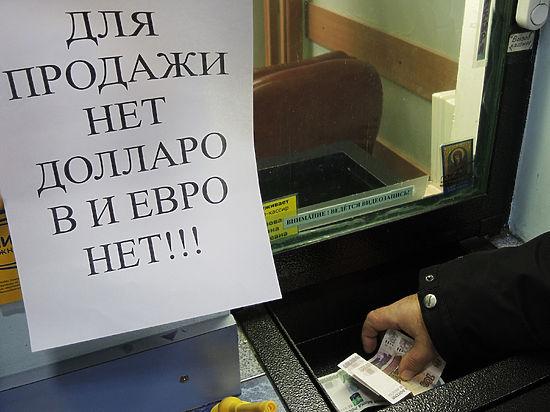|
Ruble is now being driven by the Russian
population piling out of the currency not currency speculators, according to a
note from the head of emerging market strategy at Société Générale.
Benoît Anne writes (emphasis added):
The stress surrounding the RUB market
appears to have mutated in a major way and is now essentially a domestic retail
flow problem. Essentially, the
local population—or at least part of it—after having witnessed the recent RUB
slide, is not that comfortable holding loads of ruble anymore, and has
decided to make the switch to dollars, a phenomenon we observe in global
emerging markets (GEM) on a regular basis when the local currency comes under
severe pressure.
That is a huge shift that will be a major
concern for the Russian government's attempts to stabilise the currency.
As Business Insider
reported last week, food prices in Russia have shot up by 25% over
2014 as Russian's confidence in the country's future starts to evaporate. Our
sources in Moscow told us that cash machines in the Russian capital were being
routinely emptied by nervous bank customers eager to convert their rubles into
other currencies or to buy goods before the price shoots up even further.
Since then the situation has become even
worse. After the ruble fell a further 10% on Monday many Russians appear to
have fallen into a full-blown panic.
“The demand is enormous. People are
bringing piles, huge piles of cash. It is madness,” said Kamila Asmalova, a manager
at a Moscow branch of Sberbank told the Wall
Street Journal.
A loss of faith in the currency may help
explain why the shock 650 basis point rate hike by the central bank on Tuesday
morning failed to halt the ruble rout. If people have lost faith in the
stability of the currency they are unlikely to be concerned about the level of
interest paid on their savings, and much more concerned about switching their savings
into other more stable currencies as quickly as possible.

Foreign exchange services in Russia are
struggling to keep up with demand for dollars and euros as the photo below of a
Moscow bureau de change demonstrates.
And, as Anne says, the solving a loss of
confidence problem is "not necessarily easily done through another rate
hike". Instead the authorities need to explore other tools. She suggests:
·
Step 1, intervene
heavily in the FX market to take the speculative shorts out of the picture.
That may need to push the RUB back to below 55 though, which means that the
central bank needs to come with at least $5bn in one go, if not more.
·
Step 2, once the locals
see the RUB turn around a bit, the overall sentiment picture should improve,
but the central bank will still have some major work to do. The authorities
should send a clear message that they stand ready to be in bail-out mode, if
need be, which ultimately should help.
The latter point may help explain the announcement
by Russia's Finance Ministry that it was preparing to sell some $7 billion of
reserves to support the currency. On the face of it the move looked
very strange as the central bank has access to a large chunk of the country's
$406 billion of reserves to spend in currency markets if it sees the need to.
In fact, it has already spent over $10 billion so far in December buying up
rubles.
Instead the government looks to be trying
to send a clear message the it will move in lock-step with the central bank and
that the latter enjoys its full support. That message, if it reaches the
Russian people, could be priceless. If not, they could continue burning through
more reserves with precious little result.





No comments:
Post a Comment